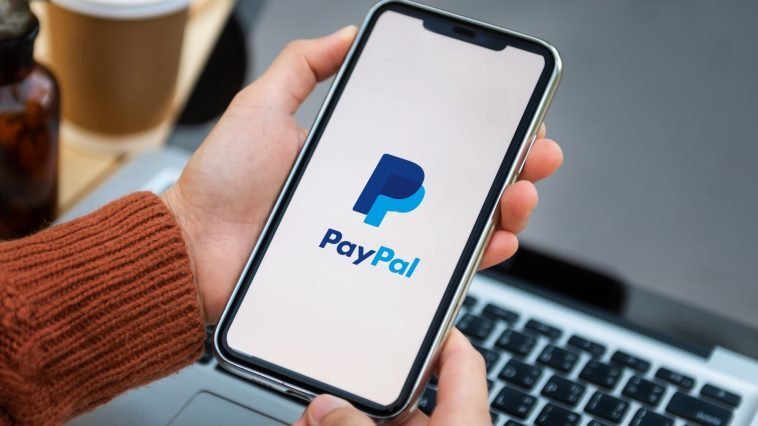Introduction.
If you’re creating digital products—like eBooks, online courses, templates, presets, music, or design files—you’ve probably asked yourself how to actually sell them and get paid smoothly. I get it.
Building a great product is one thing, but figuring out how to collect payments and deliver your files automatically? That part can feel confusing.
That’s where PayPal comes in. It’s one of the most trusted and widely used online payment systems in the world, with over 400 million active accounts.
And yes, it works just as well for digital products as it does for physical goods. You don’t need to be tech-savvy or own a fancy website.
With just a few simple tools, you can start accepting payments, automatically deliver your files, and build a system that works while you sleep.
Let me walk you through how to use PayPal to sell your digital products—step by step.
Why Use PayPal To Sell Digital Products?
Here’s why so many creators and small business owners use PayPal:
It’s trusted globally – PayPal is available in over 200 countries and supports 25+ currencies, which makes it easy to sell to a global audience.
It’s easy to set up – You don’t need a complicated e-commerce store to start. You can add a PayPal button to your website, social media page, or email.
It works with digital delivery tools – You can connect PayPal to tools like Gumroad, SendOwl, Payhip, or WooCommerce to automate file delivery.
It protects both you and the buyer – PayPal includes basic fraud prevention, and you can create clear refund and delivery policies.
Now, let’s talk about how to actually do it.
How Do I Sell Digital Products With PayPal?
1. Set Up a PayPal Business Account
If you haven’t already, go to paypal.com/business and sign up for a free business account. It’s free to create and gives you access to features like payment buttons, analytics, and customer support.
Tip: Use your business name and logo if you have one. It looks more professional and helps build trust with buyers.
2. Create Your Digital Product
This part depends on what you’re selling. It could be:
A PDF (eBook, workbook, checklist)
A .zip file (graphic pack, photo presets, fonts)
An audio file (music, podcast episode)
A video course
Software or templates
Make sure your product is easy to download and under a reasonable file size. Most platforms limit downloads to under 2–5GB.
3. Choose How You Want To Deliver the Product
PayPal doesn’t deliver files on its own. But you can use tools that do, and they work seamlessly with PayPal.
Here are some popular ones:
SendOwl
You upload your product, set a price, and connect it to PayPal. Once someone pays, they automatically get the download link. You can even set limits (e.g., 3 downloads per customer) to prevent abuse.
Payhip
Great for beginners. It handles payments, downloads, and even EU VAT. You can customize your product page and sell without needing a website.
Gumroad
Well-known among creators. You can sell eBooks, courses, music, and more. Gumroad lets people pay with PayPal or card, and they handle all the digital delivery for you.
These platforms usually take a small fee per transaction (around 3–8%), but the convenience is worth it, especially if you’re just getting started.
4. Add a PayPal Payment Button (Optional)
If you have your own website and want to keep things super simple, you can add a PayPal “Buy Now” button. It takes just a few minutes:
Log into your PayPal Business account
Go to “PayPal Buttons” (or search “PayPal Buy Now Button Generator”)
Choose the product, price, and currency
Copy the HTML code and paste it on your website
You’ll need to deliver the file manually with this method unless you set up an automation (e.g., through Zapier or WooCommerce).
5. Set a Fair Price and Keep It Simple
Pricing digital products can be tricky. Don’t overthink it. Start with a price that reflects the value you’re offering, but also fits your audience.
Most digital products online sell between $5 and $50, but it can be more if it’s high-value (like a full course or pro software).
6. Promote Your Product
PayPal doesn’t bring customers to you—you’ll need to drive traffic yourself. Here are a few ways to do that:
Share your link on social media
Build an email list with a freebie (lead magnet)
Write blog posts related to your product
Post in relevant communities (Reddit, Facebook groups)
Run a small ad campaign if you have a budget
Once you start getting a few sales, it gets easier to build momentum.
How Much Does PayPal Charge?
PayPal takes a small fee from each transaction. As of now (2025):
2.9% + $0.30 per sale (US)
Fees may vary for international sales or microtransactions
You can view the updated pricing on PayPal’s official fees page
If you’re selling high-volume products, you might qualify for PayPal’s Merchant Rate, which slightly reduces fees.
Best Practices When Selling With PayPal
Be clear about what buyers are getting – Include descriptions, previews, and any refund policies.
Use a professional email address – It looks more trustworthy than a personal one.
Name your files properly – “Workbook.pdf” is better than “download123.pdf.”
Consider adding a Terms & Conditions page – Just in case someone disputes a charge.
Always test the checkout and delivery – Buy your own product and see how it feels.
FAQs
Can I sell digital products with a personal PayPal account?
Technically yes, but it’s better to use a business account. You get more features, and it helps you look professional.
What if someone doesn’t receive their download?
Most platforms like SendOwl or Gumroad automatically handle this. But always keep a backup download link in case you need to email it manually.
Can I offer discount codes or bundles?
Yes! Platforms like Gumroad and Payhip support coupons, bundles, and even subscriptions.
Is selling digital products legal in every country?
Yes, mostly. But some countries have tax rules for digital products. If you’re selling in the EU, make sure your platform handles VAT collection. Payhip and Gumroad do this automatically.
Conclusion
Selling digital products with PayPal is one of the simplest ways to turn your skills into income. It doesn’t require a big investment or a tech background. You just need a PayPal account, a product people want, and a way to deliver it.
Start small, test the process, and improve as you go. Once your system is up and running, you’ll be making passive income from something you created once.
What kind of digital product do you want to sell first—and what’s stopping you from starting today?





GIPHY App Key not set. Please check settings